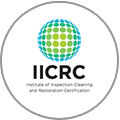Welcome to our informative guide on how to prevent and handle water damage effectively. Water damage can cause extensive harm to your home, leading to costly repairs and potential health hazards. By avoiding common mistakes and implementing the right strategies, you can protect your property and minimize the impact of water-related incidents.
In this article, we will address some crucial factors that homeowners often overlook when it comes to water damage. Ignoring the signs, delaying cleanup, attempting DIY restoration, and neglecting moisture control measures can all have severe consequences. By understanding these pitfalls, you can make informed decisions and take proactive steps to safeguard your home.
Key Takeaways:
- Recognizing the signs of water damage is crucial for early intervention.
- Prompt water damage cleanup is essential to prevent further deterioration.
- DIY restoration may result in inadequate repairs and additional expenses.
- Effective moisture control measures are vital to prevent water damage recurrence.
- By avoiding these mistakes, you can protect your property and save on costly repairs.
Ignoring Water Damage Signs
Recognizing the signs of water damage in your home is crucial for protecting your property and avoiding costly repairs. By understanding the indicators and symptoms, you can take immediate action to mitigate further damage and address the issue effectively.
There are several common signs that may indicate water damage:
- Visible water stains: Look for discolored patches or water rings on walls, floors, or ceilings, as these are clear indications of water infiltration.
- Damp or musty odors: A persistent musty smell in your home can be a sign of hidden moisture and mold growth associated with water damage.
- Peeling paint or wallpaper: Water exposure can cause paint to bubble or peel and can lead to wallpaper detaching from the walls.
- Warping or buckling: Pay attention to changes in the shape or structure of materials such as wood, laminate flooring, or drywall, as they can indicate water damage.
- Mold and mildew growth: The presence of mold or mildew in your home is a clear sign of excessive moisture, which can be caused by water leaks or high humidity.
It is essential to address these water damage indicators promptly to prevent further complications. Immediate action can save you from costly repairs and potential health hazards caused by mold and mildew.
If you notice any of these signs, it is recommended to take the following steps:
- Locate the source: Try to identify the origin of the water damage, such as leaking pipes, roof issues, or faulty appliances.
- Stop the water flow: If possible, shut off the water supply to prevent further damage.
- Contact a professional: Reach out to a reputable water damage restoration company for expert assistance in assessing and addressing the problem.
- Document the damage: Take photographs or videos of the affected areas for insurance purposes and to facilitate the restoration process.
| Signs of Water Damage | Water Damage Indicators | Water Damage Symptoms |
|---|---|---|
| Visible water stains | Damp or musty odors | Peeling paint or wallpaper |
| Warping or buckling | Mold and mildew growth |
Delaying Water Damage Cleanup
When it comes to water damage cleanup, time is of the essence. Delaying the cleanup process can lead to exacerbated damage and increased restoration costs. To mitigate the risks associated with water damage, immediate response and swift restoration are crucial.
By promptly addressing water damage, you can prevent further deterioration of your property’s structure and minimize the risk of mold growth and other health hazards. The longer you wait, the more extensive the damage can become, making the restoration process more challenging and expensive.
Acting swiftly allows you to limit the spread of water and moisture, reducing the potential for secondary damage. It is essential to remove standing water, dry out affected areas, and initiate cleanup efforts as soon as possible.
To ensure prompt water damage cleanup, consider implementing the following tips:
- Assess the situation: Evaluate the extent of the damage and identify potential safety hazards. If necessary, turn off electrical power and shut off the water source to prevent further damage.
- Contact professionals: Engage the services of a reputable water damage restoration company with the expertise and equipment to handle the cleanup process efficiently. Their prompt response and specialized knowledge can help mitigate the damage effectively.
- Document the damage: Take photographs or videos of the affected areas before any cleanup efforts begin. This documentation can support insurance claims and ensure proper assessment of the damage.
- Begin drying out: Use fans, dehumidifiers, and other drying equipment to facilitate the drying process. Open windows and doors to promote air circulation and aid in moisture removal.
- Remove damaged items: Dispose of irreparable belongings and materials that may hinder the drying process or pose health risks.
- Sanitize affected areas: Clean and disinfect surfaces to prevent the growth of mold and bacteria. Use appropriate cleaning solutions recommended by professionals.
By following these tips and promptly addressing water damage, you can minimize the impact on your property and ensure a swifter restoration process. Remember, time is critical in mitigating the damage caused by water infiltration.
Attempting DIY Water Damage Restoration
While the allure of tackling water damage repair on your own may seem tempting, it’s important to recognize the potential pitfalls of this DIY approach. Without the proper knowledge, skills, and equipment, self-restoration efforts can often lead to costly mistakes and further damage to your property.
One of the most common mistakes made during DIY water damage repair is improper drying techniques. Effective drying is crucial in preventing mold growth and structural issues. Without specialized equipment, it can be challenging to thoroughly dry hidden moisture, leading to hidden damage that may resurface later on.
Inadequate repairs are another risk associated with DIY water damage restoration. Without the expertise of professionals, you may overlook important repairs or use improper materials, resulting in compromised structural integrity and lingering issues. Hiring professionals ensures that all necessary repairs are conducted correctly, providing long-term solutions to the damage.
By hiring professionals for water damage restoration, you benefit from their expertise, experience, and specialized equipment. Professionals have the necessary knowledge to thoroughly assess the extent of the damage, develop a comprehensive restoration plan, and execute it efficiently.
Additionally, hiring professionals for water damage restoration saves you time and effort. They handle all aspects of the restoration process, from water extraction to structural repairs, allowing you to focus on other important tasks and providing peace of mind that the job will be done right.
When it comes to water damage restoration, it’s crucial to prioritize the safety and well-being of your property. Hiring professionals ensures that the restoration process is carried out effectively, minimizing the risk of costly mistakes and ensuring a thorough and efficient restoration.
Neglecting Moisture Control Measures
To prevent water damage recurrence, it is essential to prioritize moisture control in your home. By effectively managing moisture levels, you can minimize the risk of future water damage incidents. Here are some practical tips and techniques to help you keep moisture at bay:
- Proper ventilation: Ensure that your home is adequately ventilated to prevent excessive moisture buildup. Use exhaust fans in bathrooms, kitchens, and laundry rooms, and open windows on dry days to promote air circulation.
- Fix leaks promptly: Address any leaks in your plumbing system, roof, or windows immediately. Even a small leak can lead to significant moisture issues over time.
- Monitor humidity levels: Invest in a hygrometer to measure the humidity levels in your home. Ideally, indoor humidity should be kept between 30 and 50 percent. Use dehumidifiers in damp areas if necessary.
- Insulation: Properly insulate your home to prevent condensation and moisture accumulation. Insulating crawl spaces, attics, and basements can help minimize the risk of water damage.
- Regular maintenance: Regularly inspect and maintain gutters, downspouts, and drainage systems to ensure they are functioning properly. Clean gutters and downspouts of any debris or blockages that can lead to water buildup.
By implementing these moisture prevention techniques, you can protect your home from the destructive effects of water damage. Taking proactive measures to control moisture levels will not only save you from costly repairs but also provide you with peace of mind.
Conclusion
In conclusion, it is crucial to avoid common water damage mistakes to protect your property and prevent costly repairs. By recognizing the signs of water damage and taking immediate action, you can mitigate further damage and minimize the financial burden.
Remember, delaying water damage cleanup can lead to severe complications, such as mold growth and structural damage. Swift response and prompt cleanup are essential to ensure a successful restoration process.
Attempting DIY water damage restoration may seem cost-effective, but it can result in ineffective repairs and potential risks. Hiring professionals with the expertise and specialized equipment is the best approach for efficient and reliable restoration.
Additionally, neglecting moisture control measures can increase the risk of recurring water damage incidents. Implementing preventive techniques and managing moisture levels in your home will help safeguard your property from future damage.
By taking immediate action, seeking professional assistance, and implementing proactive moisture control, you can protect your property and prevent the detrimental effects of water damage. Remember, prevention is key, and staying vigilant can save you from unnecessary stress and financial strain.
FAQ
What are some common signs of water damage in a home?
Common signs of water damage include water stains or discoloration on walls or ceilings, musty odors, mold or mildew growth, peeling or bubbling paint, warped or buckling flooring, and visible water pooling or dripping.
Why is it important to respond promptly to water damage?
Prompt response to water damage is crucial to prevent further damage and costly repairs. Delaying cleanup can lead to structural damage, mold growth, and health hazards. Acting immediately helps minimize the impact and expense of water damage.
Is DIY water damage restoration recommended?
DIY water damage restoration is not recommended. Handling the restoration process without professional assistance may result in improper drying techniques, inadequate repairs, and increased risk of mold growth. It’s best to hire professionals for efficient and effective restoration.
What can I do to prevent water damage recurrence?
To prevent water damage recurrence, it’s important to implement moisture control measures. These include regular inspection of pipes and plumbing, proper ventilation, maintaining proper drainage systems, and using moisture barriers or sealants in susceptible areas.
What are the key takeaways for avoiding water damage mistakes?
The key takeaways for avoiding water damage mistakes are to recognize the signs of water damage, respond promptly to any water-related issues, seek professional help for restoration, and implement effective moisture control measures to prevent future incidents.






